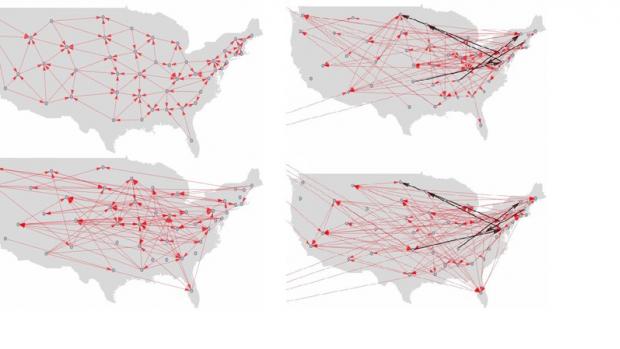The Science of Diffusion Reveals Complex Web As Health Policies Spread from State to State

A team of researchers from New York University and the University of California took the scientific principle of diffusion — typically used to study the way particles intermingle or move within a substance from a higher concentration to a lower one — to determine how health policies travel among state governments.
The research team — comprising Professor Maurizio Porfiri and Post-Doctoral Associate Carsten Grabow of the NYU Tandon School of Engineering; Associate Professor Diana Silver of the NYU College of Global Public Health; and Professor James Macinko of the UCLA Fielding School of Public Health — used dynamical systems, informational theory, and complex networks to examine how public policy spreads.
Their paper, “Detecting Causality in Policy Diffusion Processes” published in the journal Chaos, reported highly complex leadership and followership ties among states rather than simple associations linked to ideology or proximity.
They employed two techniques as they studied policies ranging from transportation safety to drug addiction: information-theoretic union transfer entropy and event synchronization. Their results suggest that union transfer entropy is more useful for slowly varying processes, and event synchronization is more effective in faster policy enactment areas.
The National Institute on Alcohol Abuse and Alcoholism supported the work, and the team hopes to continue exploring additional datasets such as those related to tobacco regulations. From a theoretical point of view, they will seek alternative, data-driven means to describe the diffusion process; from an engineering viewpoint, they hope to implement control techniques to enhance the diffusion of effective policies and inform the decisions of policymakers.





